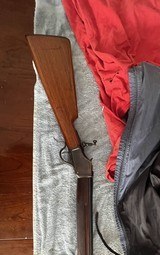 |
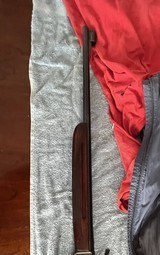 |
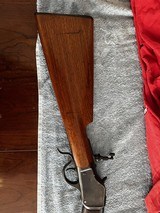 |
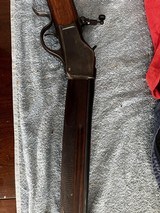 |
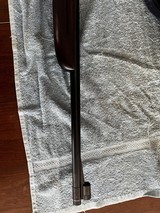 |
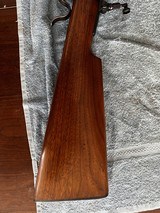 |
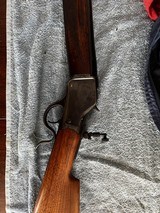 |
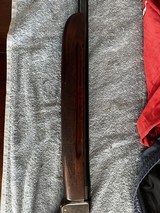 |
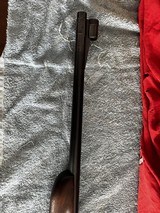 |
 |
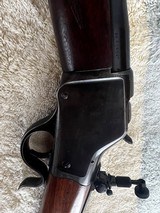 |
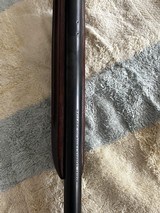 |
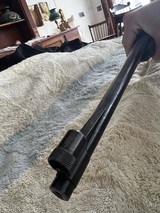 |
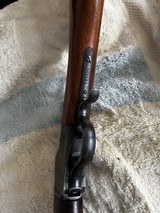 |

Winchester 1885 High Wall, Griffn & Howe # 1140 Barrel, 22 Hornet
Guns International #: 101869398 Seller's Inventory #:
Category: Griffin & Howe Rifles - Winchester Rifles - Model 1885
Seller's Information
When emailing or calling sellers direct, please mention that you saw their listing on GunsInternational.com
Seller: James Birch
Member Since: 6/17/18
First Name: James
Last Name: Birch
State: Ohio
Zip: 44004
Country: United States
Phone: (440) 997-0428
Number of Active Listings: 4
Total Number of Listings: 73
Seller: Private Seller
Return Policy: 3 day inspection and return policy on used guns.
Payment Types Accepted: US Postal Mondey Order, Certified Bank Check
Description:
SOLD to Joe. Pending Payment. Price: $ 2499.99 plus shipping and insurance.
Up for sale is an 1885 Winchester High Wall, with a Griffin & Howe barrel, # 1140, in 22 Hornet.
The gun weighs 7 pounds, 5.2 ounces.
The Winchester Serial Number is # 117934. I checked a few sources for the production date of the gun, and they varied. I personally like Proofhouse site the best for their Serial Number information. According to them, many Serial Numbers were skipped after # 115,170. They also noted that Windsor Muskets were made in 1918 and 1919. Another site said the gun was made after 1919. To be sure, it is a later Model 1885. The highest Serial Number for an 1885 was about 139,700. So, again, this is definately a gun produced toward the end of the Production run. The skipped (or missing) Serial Numbers definately add to the many questions pertaining to the history of this particular rifle.
The gun is in overall very good conditon for its age. The rifle is a "Mystery" of sorts. I think that someone could have added the G&H barrel to the gun years ago. For what reason, I do not know. And, then again, too, Griffin & Howe could have put the barrel on the gun. To me, the front of the gun, action, barrel, and forearm--look original. Someone really took a lot of time to checker the forearm.
The buttstock fits great and is nice and tight. A person could simply refinish the wood and match the stain for the forearm and butt, and then simply checker the butt grip a little bit. I mention the Amoskeog and gun in it from 2019 that is similar. Take a look at that gun to get an idea of how the butt stock could be checkered.
There is just a little bit of roughness on the bottom left side of the receiver. See the pictures.
This was the period where Rudolph Kornbrath engraved all the barrels with the Griffin & Howe Legend, and Serial Number. The way he cut the ampersand is unique, as well as the script style that he used. He also engraved the "22 Hornet" on the left side of the barrel.
Let me explain the bit of history to help bring the details of the gun together.
Griffin & How started producing guns on Jan. 1, 1930 beginning with serial number 1000. They were known then as "Griffin & Hobbs," for a very short while. Partway during the year, the legend reverted back to "Griffin & Howe." They made about 15 guns (The highest number I have seen in a "Hobbs" is # 1014. # 968 is a Model 54 in 22 Hornet. But, the Model 54 Hornet wasn't introduced until 1933. Incidentally, they did not use up all the numbers to 1000 before 1930. They got up to around the number 960, and stopped there at the end of 1929. However, they did start reusing these left over numbers sometime in the early 1930's. For the serial number records, I have used the Lucian Cary and Ambercrombie and Fitch datings, as Petrov's numbers are just a little bit off the mark.
So, all that aside, this gun barrel dates to 1932. At that time, Griffin & Howe was "Batch Building" 22 Hornets. They're primary gun to build a 22 Hornet in was the 1922 Springfield, but single shot guns were also made as well. This was because when the 22 Hornet Cartridge was introduced by Winchester in January of 1930, there was only the cartridge, and no gun manufacturer then. This caused a furor and scramble for gun manufacturers to produce a gun for this caliber. Actually, the smaller custom gun manufacturers were at an advantage, because they could immediately start producing guns. The larger manufacturers would have to design, and tool up equipment, tor this undertaking.; It took Winchester until January of 1933 to have their Model 54 ready to go on sale.
I am working on a book about Griffin & Howe, and one of the chapters is "Batch Building the 22 Hornets." Some information is noted below.
As I noted, the 22 Hornet took the gun world by storm. I have done a detailed statistical analysis of the Griffin & Howe guns from 1930 on, and, a large number of guns in the Serial number range of 1000 to 1100 and, again, from the range of 1101 to 1200 were in 22 Hornet caliber. In essense, G&H was (for what a very small shop could do), "Mass-Producing" parts for these guns. James Julia has noted that Griffin & Howe, "made a minor industry" of the 22 Hornet Production. So, essentially, Griffin was making up barrels, actions, followers, bolts, etc. for use in building 22 Hornet rifles. They had these components in stock, and would assemble some by order, and, also, had stock guns available as well. I am sure that there were guns partially assembled as well, that could be easily configured almost instantly for a customer's wants or needs.
Griffin & Howe could get components from the Sprngfield Armory as well as guns. So, taking barrels into account, G&H could order 1922 barrels separately, and then rechamber them to 22 Hornet to be used as needed. These Armory barrels could be fitted with a front sight, and thus fitted with an appropriate action. G&H also chambered for the old 25-20 Single Shot.
Not all of G&H guns of this period were fancy-schmancy. Remember, this was 1932, and it was the worst year in the depths of the Depression. Petrov devotes a chapter to "Depression Era Sporters." Many of the guns that they produced were "Plain Jane" guns. Again, if you wanted a 22 Hornet, just about your only option at this time was to have one built. Petrov also talks about Neidner's shop in Great Depression years--that at the end of the week, after they had taken into account expenses, that the money was divided up among the workers. Gunsmiths would take in any work that they could. To me, this time period was one of the most fascinating because you might see just about anything coming out of a gun shop. The customer was "King" during those years.
G&H Serial numbers (Lucian Cary/Abercrombie and Fitch)
Serial numbers for 1930 are 1001 to 1053
Serial numbers for 1931 are 1054 to 1109
Serial numbers for 1932 are 1110 to 1168
Serial numbers for 1933 are 1169 to 1228
The Griffin & Hobbs Serial numbers were about the first 15 numbers (1001 to 1015). I have seen serial number 1014, Starting in the 1040 range of numbers (give or take), Griffin starting making up 22 Hornet guns. I would say many of these were, indeed, based on the 1922 Receiver. Interestingly enough, some other calibers included the 25-20 single shot.
As the 1930's prgressed onward, it seems to me that more and more single shots were produced, some the Hornet, but others in the 2R Lovell as well. As far as the numbers I have seen and recorded, # 1040 to 1160 was when G&H was really turning out the Hornets in "batches." With some of the Hornets, they used the Armory barrel, while with other guns, they manufactured a new barrel entirely. But, Armory guns could still have a barrel number. I have seen those. I have seen a custom barreled gun with the G&H number, and the very next serial number could be an Armory stocked gun with the Armory barrel, and still have a number. Michael Petrov indicated that this was encountered during the period.
So, in sum, this gun to me is a "Question Mark." It is an armory barrel--you can faintly see a number (7 or 9) at the end, which is mostly covered by the ramp on banded sight, which is exactly the type of sight that G&H would have used an a plainer gun. There are also two drilled and tapped holes in the barrel, with correct (Springfield or G&H--I have seen this same exact type of plug screw in Springfield rifles that G&H did work on) plug screws, between the breech and the legend. Springfield Armory did have drilled and tapped barrels that were included in many of their 1922 Springfield guns. So, again, I make the point that we just can't know everything. The time period was unique in custom gun building.
For a look at a similar gun, go to Amoskeog , June 1, 2019, # 122, Lot # 115. That is a (later) 1939 G&H Highwall in 2R Lovell. With comission, the gun went for around $3500. I had a freind who bought a few guns at this particular . It was the height of the COVID pandemic, and 2020, he was looking at more guns, and his friend who works there told him that he bought his guns for "Pennies on the Dollar," and had those guns come up for sale just a year afterward, they would have been almost twice the price. Again, take a look at the buttstock to see how you could checker this gun.
The bore is bright and shiny.
The tang sight operates properly and correctly. It is a very nice touch for this gun.
The forearm looks to be a customized "Musket" style forearm. Who did this work?
The buttstock appears to be a replacement, but this is a common occurance with these guns.
If you have any questions, simply call or email me.
SOLD
Curio/Relic: Yes
Manufacturer: Winchester/Griffin Howe
Model: 1885
Serial Number: 117/934/1140
Barrel Length: 24
Condition: Very Good/Fine
Bore Condition: Bright/Shiny